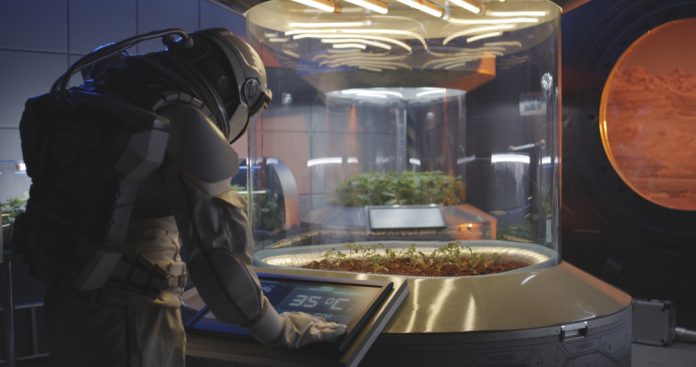New research has identified a species of desert moss that could prove pivotal in colonising Mars.
The desert moss, known as Syntrichia caninervis, has emerged as an exciting candidate for Mar colonisation due to its tolerability to extremely harsh drought conditions.
Now, researchers have unveiled that S. caninervis can also survive freezing temperatures as low as −196°C, high levels of gamma radiation, and simulated Martian conditions.
While previous studies have tested the ability of microorganisms, algae, lichens, and plant spores to withstand the extreme environments of outer space or Mars, this is the first study to test whole plants.
The researchers explained: “Our study shows that the environmental resilience of S. caninervis is superior to that of some highly stress-tolerant microorganisms and tardigrades.
“S. caninervis is a promising candidate pioneer plant for colonising extraterrestrial environments, laying the foundation for building biologically sustainable human habitats beyond Earth.”
Syntrichia caninervis overview
Syntrichia caninervis is a common moss species with a widespread global distribution.
It thrives in extreme desert environments, including Tibet, Antarctica, and circumpolar regions, forming part of the biological soil crust found in arid lands.
Due to its resilience, researchers tested its limits in the lab.
Cold tolerance tests
To test cold tolerance, researchers stored the moss at −80°C for three and five years and at −196°C for 15 and 30 days.
The plants regenerated upon defrosting, although more slowly than control specimens that were dehydrated but not frozen. Dehydrated plants rebounded faster than those frozen while hydrated.
Radiation tolerance
The moss also survived gamma radiation that would kill most plants. Exposure to 500 Gy even promoted its growth, while humans suffer severe convulsions and death at around 50 Gy.
Researchers concluded that S. caninervis is among the most radiation-tolerant organisms known.
Mars-like condition tests
Using the Chinese Academy of Sciences’ Planetary Atmospheres Simulation Facility, researchers tested the moss under Martian conditions: 95% CO2 atmosphere, temperatures from −60°C to 20°C, high UV radiation, and low atmospheric pressure.
Dried moss achieved a 100% regeneration rate within 30 days after exposure for up to seven days.
Hydrated plants also survived one day of exposure but regenerated more slowly than dried specimens.
The scientists explained that although there is a long way to go before creating self-sustaining habitats on other planets, the moss holds promise for colonising Mars in the future.
Moving forward, they hope the moss can be brought to the Moon or Mars to test plant colonisation and growth in outer space.









